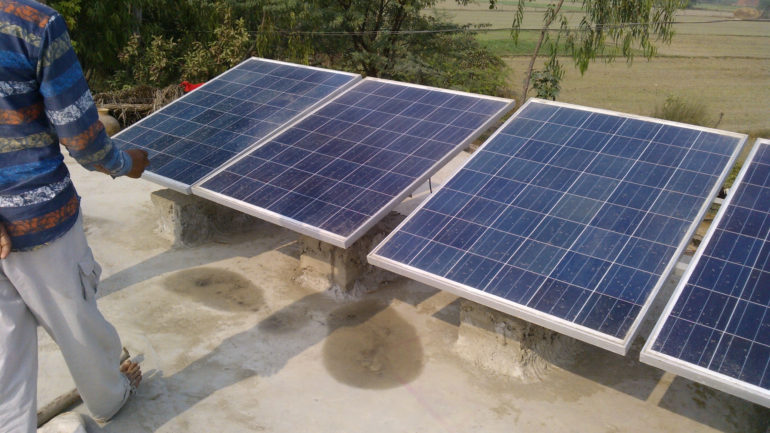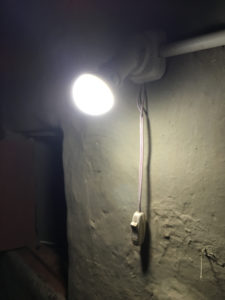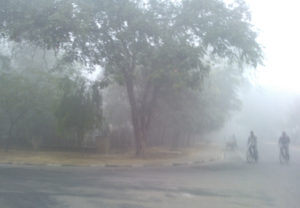Blog

“We deliver power whenever the sun is shining”. Findings from a reliability study on solar micro-grids in northern rural India
Electricity offered by micro-grids and other off-grid systems is generally considered a reliable alternative to erratic centralized grid power services in many rural and urban areas of the developing world. The recent report by CEEW found that the centralized grid power is randomly available for around 12 hours a day only in the state of Uttar Pradesh in India. However, there are not many studies confirming whether the assumption of the reliability of the micro-grids is true.
In a recent study, we interviewed twelve solar micro-grid operators in northern rural India asking about the reliability levels of the offered systems and also conducted visits and interviews in villages. We found that actually, power outages and system interruptions occurred also in micro-grids. Power outages lasted from fractions of seconds (observed as flickering of lights) up to 15 days at a time (complete blackouts). Lengthiest outages were typically caused by the waiting time of workforce or a spare part to arrive to a remote area.

Important finding, which may have been obvious for the locals, was that solar photovoltaic (PV) reliant power systems have severe power insufficiency problems during winter (November – January). Thick clouds that fall over Uttar Pradesh prevent the solar irradiation from reaching the PV panels and them from producing energy, which leads to blackouts. In other months of the year other kinds of problems troubled the operators and customers. Component failures, lack of spare parts, vendor lock-in, tampering, monkey damaging a component were the types of incidents leading to power interruptions of various lengths.

Larger capacity system operators were somewhat better prepared to solve various problems, for example had a diesel generator backup to ensure power delivery to their customers. But presumably, each unscheduled power cut is a nuisance and reduces the attraction of renewable energy in the eyes of the customers because they hinder people from accomplishing their planned activities requiring energy (illuminating rooms, running machinery etc.).
The extent of the reliability-related problems remained partly unclear. Some companies did not hold records of downtimes and could only give estimations. A typical approximation was the following: “Maybe 10 hours [or] 9 hours per month [the grids are not operating]”. Also the level of certainty varied. The operator who wanted to play it safe stated: “If the solar is generating every day, we can deliver every day” which is an honest and realistic customer promise.
The existence of irregularities in power supply raises two relevant questions. Firstly, what is the level of awareness of donors and investors of the reliability levels of their invested energy systems? Are the customers aware of the possible problems when they decide to pay the connection fee? Donors, at least, may want to present they funded an error-free system which increased the well-being of the impoverished through energy access.
Secondly, what is the strength of insistence of different people (customers, in particular) on reliable power? For example, to which extent does the exact timing of a maintenance break during the maintenance day matter for the (typically low-income) customers? There is plenty of room for further studies on customer expectations of reliability.
The reason for the lack of numeric reliability-related data may lie in the nature of the small off-grid energy businesses among low-income people. Trust and mutual understanding between the company and customers seems to play a key role. We found that signed contracts were rarely made and everything was conducted verbally. The conditions may be harsh: off-grid, off-road, even off-network where both the customers and the companies experience various shortages (energy, cash, water, food, materials, tools, skilled workforce etc.) on a regular basis. For example, the low-income customers may not renounce kerosene lanterns despite a new micro-grid connection, maybe because they have learned to be prepared with various uncertainties in their circumstances.
Therefore the customers appeared, according to the companies at least, rather understanding towards the operators’ difficulties in delivering uninterrupted power. Furthermore, the customers may have sporadic incomes and may not always be able to pursue payments, which may also temporarily affect the financial standing of the companies. Companies may periodically run out of necessary resources (spare parts, cash, time) to fix a sudden technical failure. If the solar inverter fails, for example, purchasing a new one may be a huge investment. As a matter of fact, solar AC inverters were voted as the most fragile micro-grid component with a propensity for technical failures.
Off-grid companies have a strong social ethical motif, and are definitely doing a valuable job which would be impossible for less courageous practitioners. In these contexts, instead of a numeric value (e.g. an average number of power outages per year per customer), descriptive approaches to reliability evaluation may be more informative. They may even encourage reliability thinking because they uncover the practical reasons for downtimes better than some numeric value. We also propose a framework to ease the identification of the reliability-related local problems which may assist in finding local solutions as a cooperative activity among different parties involved. However, more studies would definitely be needed to assess how the customers with low socio-economic status perceive reliability in power, to be better able to design suitable power systems, services and business models.
***
Sini Numminen is a PhD student at Aalto University, Finland, and an ISEP student fellow, studying reliability and sustainability of off-grid solar energy technologies
Reference: Numminen, S., Lund, P.D., 2019. Evaluation of the reliability of solar micro-grids in emerging markets – Issues and solutions. Energy for Sustainable Development 48, 34–42. https://doi.org/10.1016/j.esd.2018.10.006
Photos: Sini Numminen, December 2016
